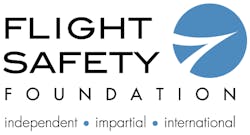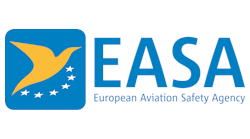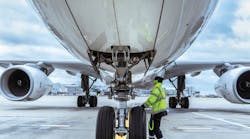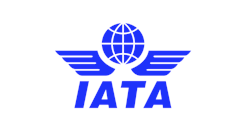Since it is very little regulated by government authorities, the ground support industry is characterized by a tradition of self regulation, while the International Air Transport Association's ground safety programs, in particular the Safety Audit for Ground Operations (ISAGO), may be the most followed and structured industry initiatives for safety performance improvements on the ramp, other initiatives have also taken shape in the industry to provide air-ide safety managers with operational and safety standards.
CAP 642
The United Kingdom Civil Aviation Authority (UK CAA) has been at the forefront in terms of standard making in ramp operations. The Civil Aviation Publication (CAP) 642 “Airside Safety Management” was first issued in 1995. The document provides guidance on matters affecting the health and safety of individuals and the safety of aircraft to aerodrome operators, airlines and other organizations that undertake activities in airside areas of aerodromes.
CAP 642 incorporates a brief overview of the legislative and regulatory arrangements and obligations that apply in airside areas and offers several model procedures demonstrating best industry practices upon which aerodrome operators and other involved organizations may base their specific procedures. The publication illustrates how risks might be identified and provides advice on how airside safety can be placed within the context of a Safety Management System (SMS). Coverage is provided to those operational situations which contain elements of risk and which might be considered commonplace. The document is structured in 5 chapters covering respectively general principles for health and safety management airside, risk management, airside development and management of airside works, airside vehicle operation and driving, safety performance management and measurement.
CAP 642 is not the only effort made by the UK CAA with regard to airside safety. The Ground Handling Operations Safety Team (GHOST) has been set up to analyze the root causes of incidents that occur on the apron, recommended actions aimed at reducing the risk to aircraft and their occupants and to formulate an action plan to address each issue. GHOST members are drawn from the CAA, airport operators, airlines and ground handling companies.
GHOST also has two subgroups:
- One addressing loading errors (Aircraft Loading Subgroup-ALS).
- One overseeing ‘capability issues’ and human performance (Human Factors Subgroup-HFS).
The ALS’ activities have included the production of two educational DVDs. “Safety in the Balance” was released in 2011 to reiterate to all those involved with aircraft loading the importance of correct mass and balance calculations and the securing of loads. In 2012 “One Team One Goal” was released to provide specific guidance to the carriage of persons of reduced mobility and their mobility aids by air.
The HFS was developed to investigate and address human factors in ground handling, including ensuring that there is an open reporting culture across the ground handling discipline with a view to increase reporting, since, as GHOST reports, “it is possible that only 50 percent of UK ground handling related errors are currently reported to the CAA through their Mandatory Occurrence Reporting (MOR) scheme”.
GHOST members have signed up to working towards achieving a just culture and GHOST has produced various guidance materials to assist ground handling providers to implement a just culture. The Supplement to CAP 382 “Guide to Ground Safety Reporting” in particular is a booklet developed by the CAA and GHOST aimed at front line supervisors and highlights what types of incidents, accidents and near misses are reportable under the MOR Scheme by law. This guide can be used as an opportunity to re-iterate the importance of reporting to internal systems as well as to the MOR scheme.
Norman Hogwood, who recently retired from a long career in aviation ground safety and most notably helped start the Australasian Aviation Ground Safety Council, is of the opinion that human factors awareness is particularly needed in the ground handling business: “Human factors play such a significant part in most apron incidents that it is extremely important to carefully examine each one in order to fully identify cause and remedy. Invariably, the major cause is associated with procedures and the failings of people to either follow them, or adequately prepare them. Unfortunately, a surprisingly large number of companies practice the dreadful policy of dismissing an employee without taking the necessary action to fully investigate the incident. Certainly up until 2012 this practice was still quite widespread, especially in the United States.”
FLIGHT SAFETY FOUNDATION
Some 10 years ago the Flight Safety Foundation (FSF) launched the Ground Accident Prevention (GAP) program. The almost exclusive aim of the FSF GAP program was to reduce aircraft damage costs. At the opening GAP meeting the joint Chairmen, Bob Vandel and Earl Weener, commented that airlines seemed to work under the impression that damage to aircraft was simply a cost of doing business.
The GAP program developed information and products in the form of “e-tools” designed to eliminate accidents and incidents on airport ramps (aprons) and adjacent taxiways, and during the movement of aircraft into and out of hangars.
Among the e-tools developed by the GAP program features a “Ground Accident Prevention Cost Model”, this tool was developed after a pioneering data collection effort. The cost model requires users to enter the number of flights handled in one year, the percentage of narrow-body (single-aisle) and wide-body (twin-aisle) aircraft. In the model the incident rate and the personal injury rate are entered by default as the industry averages per 1,000 flights calculated at the time of program development. If a given operator is experiencing different rates, these can be entered instead of using industry averages, in particular in view of the fact that rates might have changed as compared to when GAP programs data were collected.
TABLE GOES HERE
Once data are input and the calculation button is pressed, the model displays the overall costs in U.S. dollars (direct plus indirect). It should be borne in mind that the output figures are only valid so long as industry averages apply, while after 10 years from the launch of the GAP program safety performance on the ramp (and thus industry averages) might have improved and consequently cost figures may result higher than they actually are, it is also true that because of inflation incident and personal injury costs are higher today than they were 10 ago, thus making the output figures quite possibly enough representative of actual ground accident costs incurred.
Another e-tool developed by the GAP program is a set of three videos on towing corporate/business aircraft. Each of the videos has a duration of approximately 12 minutes:
- The first video provides best practices for the safe use of aircraft-tow vehicles.
- The second provides best practices for safely towing aircraft.
- The third video provides best practices for general ramp safety.
An additional resource available from the Flight Safety Foundations is a set of five ground safety leadership tip sheets designed to be presented to senior managers to heighten their awareness of ramp safety problem and its effect on the organization’s operations and economic performance. The leadership tip sheets are one-page briefings which stimulate reflections on what senior managers should ask their staff about what is being done to prevent ramp accidents, the development of a company safety policy, the inclusion of ramp operations in the company’ safety management system (SMS), roles and responsibilities in a SMS; and the development and use of ramp safety performance metrics.
The set of e-tools developed as part of the GAP program include a document template named “Ramp Operational Safety Procedures” that includes industry best practices and guidelines for a wide range of ramp procedures. The document is intended to assist ramp supervisors in the development or improvement of their organizations’ written standard operating procedures (SOPs). The template is presented in Microsoft Word format (doc) to facilitate customization by the user, including revision, deletion and addition of information as necessary to tailor the document to the organization’s ramp activities. The template is available with and without illustrations, which complement the procedures developed in the template and refer to aircraft clearance zones and related markings, circles of safety, safety cone placement, standard hand signals and cargo doors.
“The standards that were produced by the FSF under the GAP program are almost totally aimed at aircraft ground damage prevention," says Hogwood, who assisted with the editing process. "The end result of the project was the production of the Ramp Operational Safety Procedures manual”
THE AAGSC
A regional working group has also been active in the development of standards of reference for the ground operations industry. The Australasian Aviation Ground Safety Council (AAGSC) has developed Recommended Industry Practices (RIPs) for the safe operation of airlines, airports and associated facilities. “The RIPs cover a fairly wide range of topics ranging from personal harm prevention through suggestions regarding provision of safety equipment to defenses against adverse weather and the prevention of damage to aircraft. They are freely available at the AAGSC website www.aagsc.org under Resources” says Hogwood, who helped in the establishment of the AAGSC some 32 years ago.
The AAGSC has also released an Interactive Ground Safety toolkit DVD to provide a basic safety information overview for the workforce involved in the supply of services to aircraft and airport facilities. The program has been structured to cover a broad range of operations that make up the aviation ground support industry. The AAGSC clarifies that national regulations always apply and the purpose of the produced information is to advice and assist rather than to set up rules and regulations. The Ground Safety Toolkit covers topics such as airside driving, aircraft turnaround, refueling operations, manual handling, security, emergency and airport works.
The initiatives of the UK CAA, of the FSF and of the AAGSC have the common focus of stressing that the airport apron can be a very hazardous environment; their main purposes are to reduce losses associated with aircraft and equipment damage, and injury to personnel. Unlike IATA’s ISAGO, however, the other ramp safety standards developed by the industry are not designed to reduce the number of audits or eliminate redundant audits from airlines: “I don't see where they could in any way reduce audits. Hopefully, they may provide assistance to auditing personnel by guiding them in their quest for searching out errors and faults” says Hogwood.
About the author: Mario Pierobon holds a Master’s Degree in Air Transport Management from City University London and works in business development and project support at Great Circle Services in Lucerne, Switzerland. Mario regularly writes about aviation safety and his main professional and research interests are in the areas of airside safety.




